|
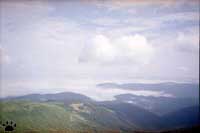
View from Mt. Goverla, Ukraine.
Goverla Mountain
Goverla Mountain (2060 m/6900') is the highest in Ukraine. It is located in Eastern Karpaty mountains,
not far from the border with Romania. This part of the range is not as high as Southern Karpaty of Romania, or Western
Karpaty (Tatry) of Slovakia, but it is less developed, and contains one of Europe's largest wilderness areas, Karpatski
Zapovednik, which includes Goverla. |
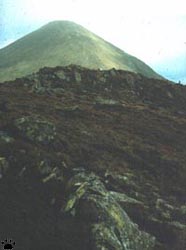
Summit of Mt. Goverla. |
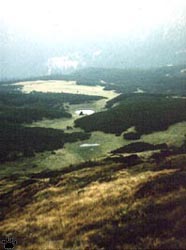
View from Mt. Goverla. |
The mountain is not a difficult climb. Its summit is covered with Alpine meadows, but the surrounding
slopes are mostly a mosaic of subalpine meadows, groves of Dwarf pine (Pinus mugo) and junipers, talus fields, and numerous
small lakes. The ridge crest is easy to follow for many miles, and dotted with Romanian border markers from pre-World War II era. |
| Subalpine meadows, locally called poloniny, are not unlike islands in a vast sea of forests.
Many rare plants and animals, such as Carpathian and Alpine newts (Triturus montandoni, T. alpestris), live here. |
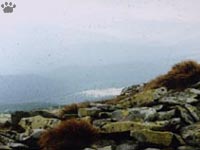
Rock crevasses and cave - habitat of rare and
spectacular luminous moss(Schistostega pennata). |
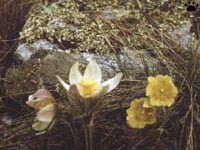
Golden-yellow pasque flower(Pulsatilla
goverlae), extremely rare Mt. Goverla endemic. |
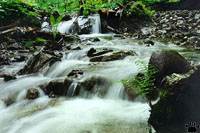
Headwaters of Black Tisa river. |
Rivers originating from Goverla flow east, to Moldova, or south, to Romania, but all of them
eventually make their way into Dunai (Danube). Just as Dnepr, Dnestr, Don and other major rivers flowing into the Black Sea,
it got its name from ancient Scythian language, where don meant "river". Rivers around Goverla, particularly upper
parts of Black Tisa and White Tisa, are usually very clean,
and many rare fishes, such as Danube salmon (Hucho hucho), come here to spawn. |
| At 1000-1900 m (3300-6300'), the Karpaty around Mt. Goverla are covered with dense
old-growth coniferous forests, composed almost exclusively of Norway spruce and European silver fir. |

Forests of White Tisa basin,
Karpatski Zapovednik. |
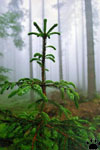
Young Norway spruce
(Picea abies). |
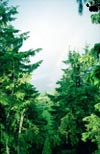
European silver firs
(Abies alba). |
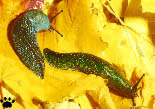
Rainbow slugs (Beltzia caerulea),
Goverla Mt. |
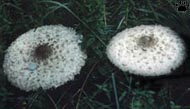
Parasol mushrooms (Lepiota procera) - largest
in Europe, to 30 cm (1') in diameter. |
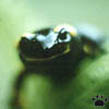
Fire salamander
(Salamander salamander). |
These forests are very wet, and shelter many species of fungi, mosses, molluscs and amphibians. |
| Below 1000 m are deciduous (hardwood) forests, known for beautiful spring flowers,
fall colors, and overall floral diversity. They are dominated by European beech
(Fagus sylvatica). |
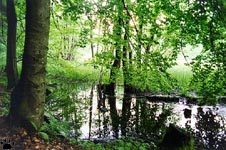
Beech forest, Karpatski Zapovednik. |

Dactylorhiza orchids. |
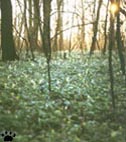 Anemones(Anemona nemorosa).
Anemones(Anemona nemorosa). |
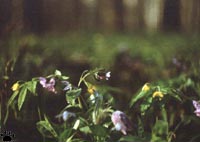 Honeybell (Pulmonaria angustifolia).
Honeybell (Pulmonaria angustifolia). |
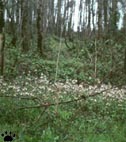 Snowdrops (Galanthus albus).
Snowdrops (Galanthus albus). |
Most forest flowers bloom from mid-April to early May, before new leaves appear on trees. |
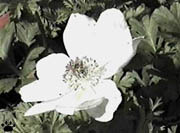
|
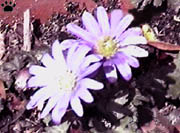
|
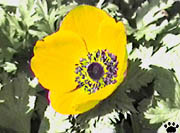
|
| Anemones of Mt. Goverla, left to right:
Anemona nemorosa, A. coronaria, A. ranunculoides.. |
| Beech forests have high productivity, and support large populations of
herbivorous mammals, such as red deer (Cervus elaphus), wild boar (Sus scrofa),
forest mice (Apodemus), and dormice (Gliridae). |

a |

a |
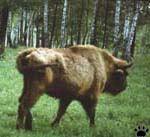
European bizons (Bos bonasus). |
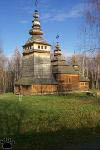 |
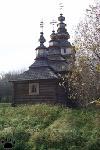 |
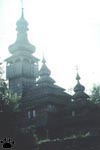 |
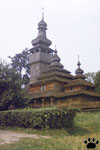 |
| Churches in the vicinity of Yasinya, Karpaty Mountains. |
|
Mt. Goverla area is known for original and well-preserved culture of forest villages, inhabited by Gutsul people.
Wooden churches are particularly beautiful here. |
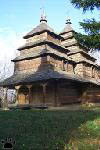 |
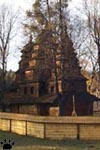 |
Wooden church near Verh-Bogdan,
in the vicinity of Rahov. |
|

 |
 |
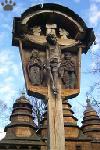 |
Wooden cross at the entrance
to the churchyard. |
|
| Foothills, once covered with oak woodlands, are now mostly converted into
fields and pastures. |
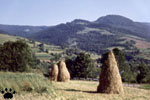
Wet climate dictates the shape
of these haystacks. |
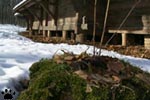
Part of wooden house in Mlechin,
in the vicinity of Hust. |

Churches near Vorohta,
in the vicinity of Yaremcha. |
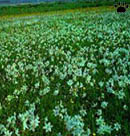
Narcissus Valley,
in the vicinity of Hust. |

Daffodils (Narcissus tenuifolius),
Narcissus Valley. |
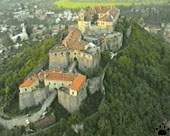
Old castle on an extinct volcano,
Beregovo. |
Among the few remaining areas of native vegetation are Narcissus Valley near Hust,
and volcanic slopes near Beregovo. |

Lily of the valley (Convallaria majalis), Mt. Goverla.
Home
|

